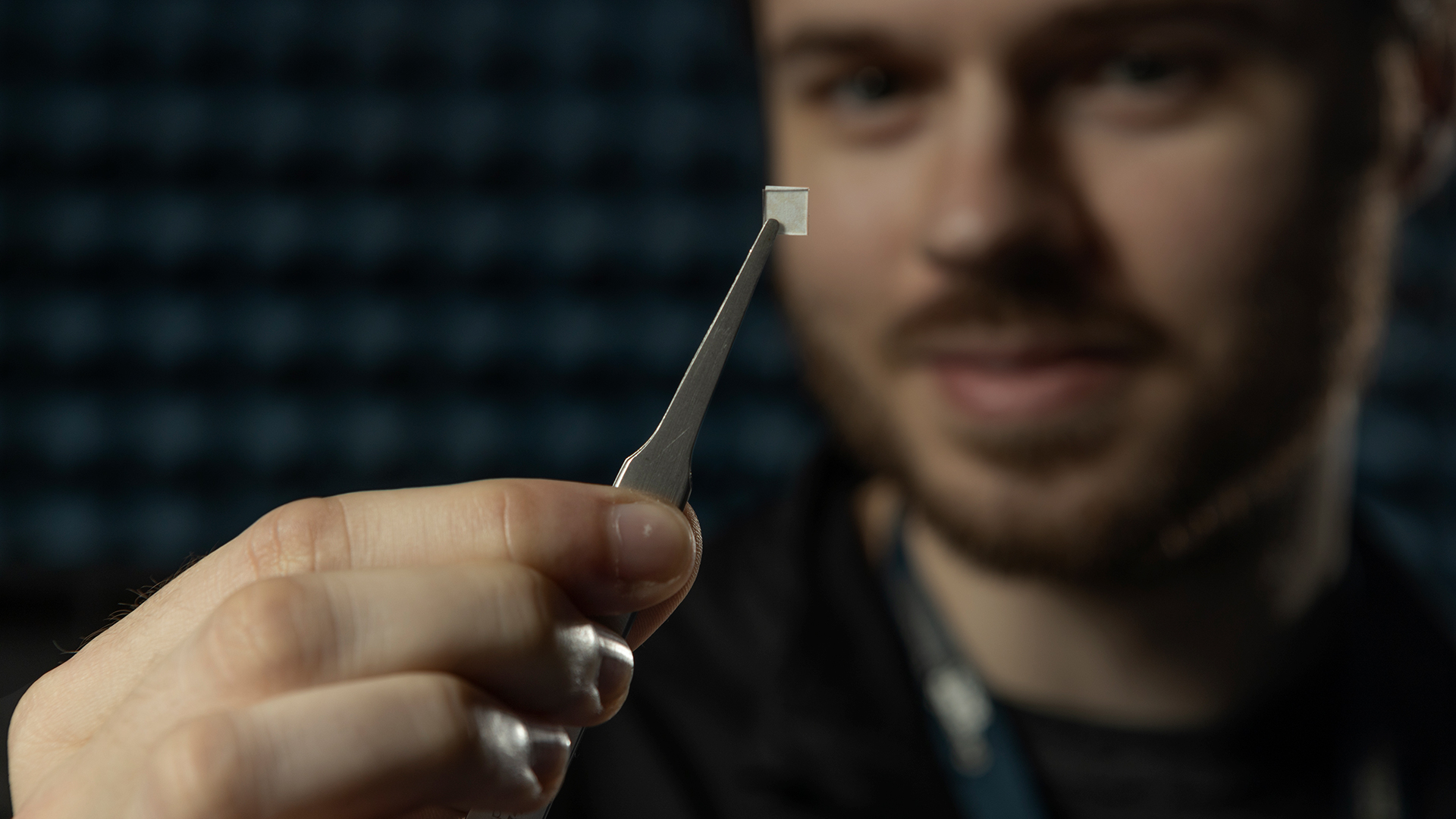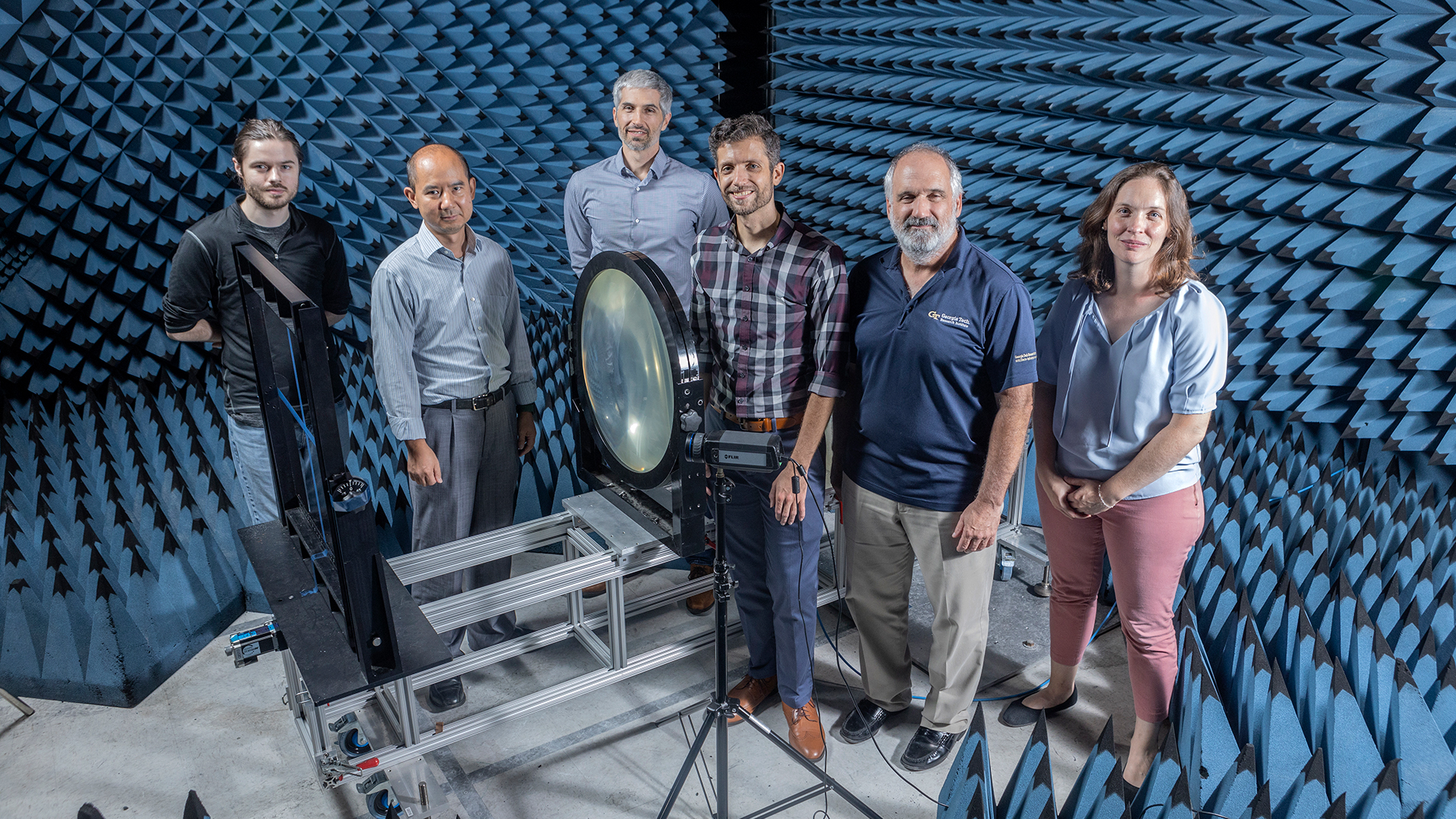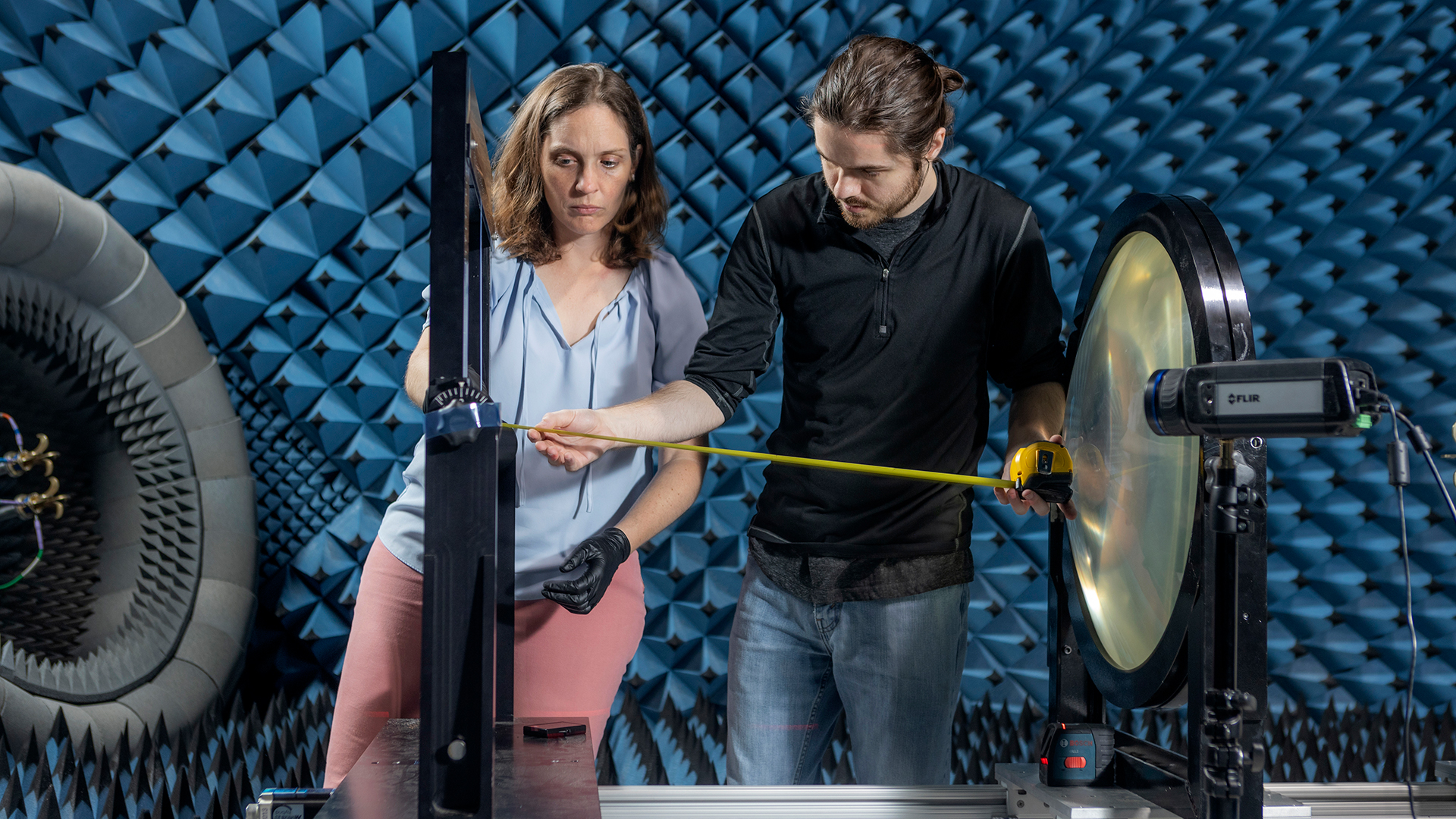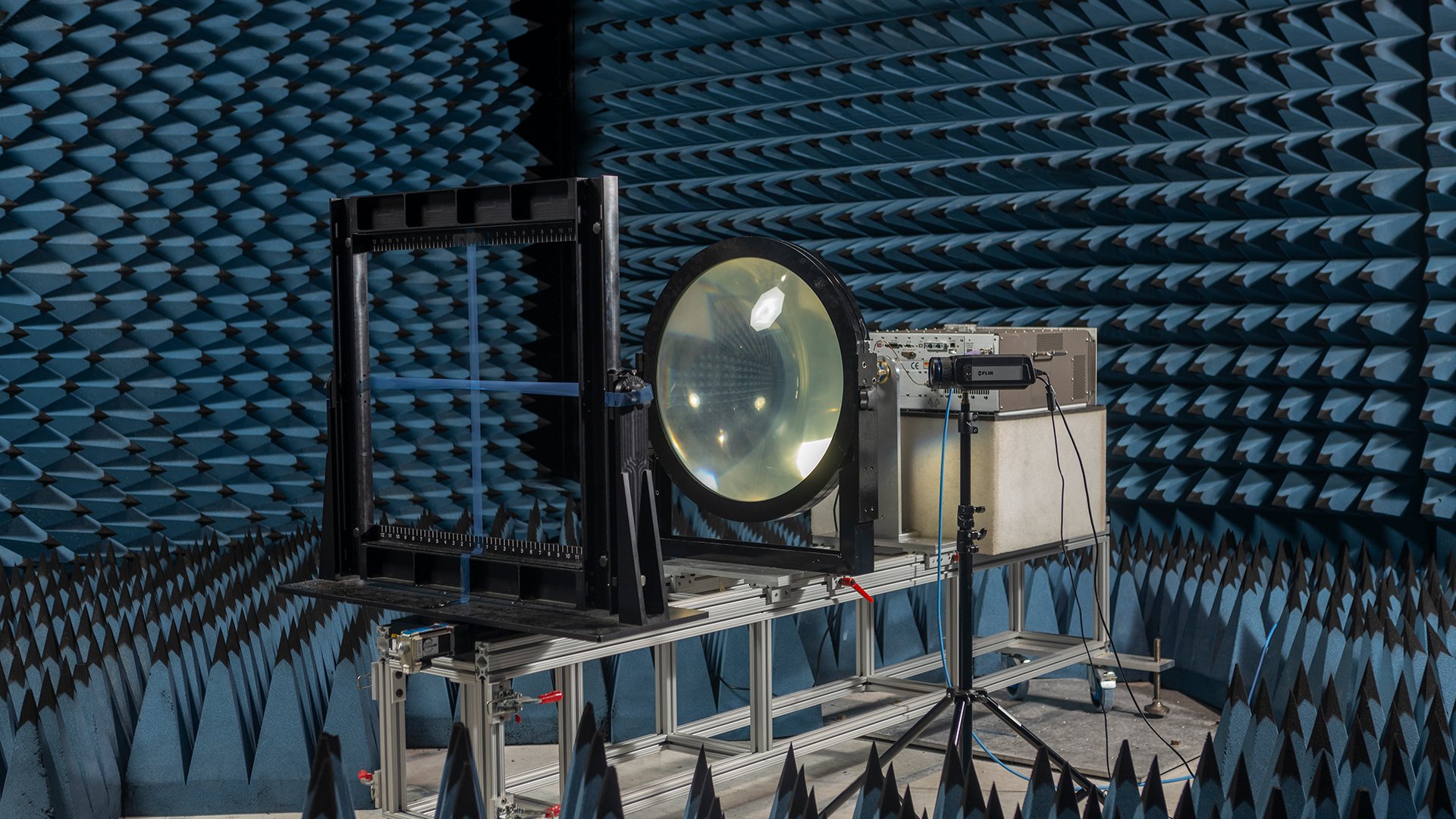New Battlefield Obscurants Could Give Warfighters a Visibility Advantage
Clouds of tiny structures that are lighter than feathers – and whose properties can be remotely controlled by radio frequency (RF) signals – could one day give U.S. warfighters and their allies the ability to observe their adversaries while reducing how well they themselves can be seen.
Using miniaturized electronics and advanced optical techniques, this new generation of tailorable, tunable, and safe battlefield obscurants – which could be quickly turned on and off – could provide an asymmetric visibility advantage. Researchers at the Georgia Institute of Technology are among several teams funded to develop a new generation of battlefield obscurants as part of the Defense Advanced Research Projects Agency’s (DARPA) Coded Visibility (CV) program.
Smoke screens created to hide troop movements or ships at sea have been used in past conflicts. Often based on burning fuel oil, these conventional techniques have many disadvantages, including limiting the visibility of both sides and using materials that are potentially harmful to warfighters. The new approach being developed at Georgia Tech will instead use lightweight and non-toxic electrically reconfigurable structures that would form obscuring plumes able to hang in the air over a battlefield.

Nanophotonic Technologies Change Properties
“We will bring nanophotonic structures into the real world and be able to change their properties remotely without having direct contact such as with an optical fiber,” said Ali Adibi, a professor in Georgia Tech’s School of Electrical and Computer Engineering and the project’s principal investigator. “They could be part of a cloud of nanostructures formed from a foil material with different dimensions, from millimeters to centimeters. They could include an antenna and diode or heater that would allow them to respond to an RF signal, changing their properties to collectively affect light passing through.”
The transparent foil structures might be used to change the optical properties of the plume to favor visibility in one direction, depending on the RF signal sent. With differences in their sizes and properties, the plumes could include a variety of structures that would respond to different frequencies, potentially allowing the obscurant cloud to be tuned for conditions.
“We will utilize a known electromagnetic concept that, by having a different distribution of scattering properties and absorptive properties, will allow us to control the asymmetric visibility,” he said.
Adibi’s research group has pioneered development of reconfigurable nanophotonic devices, fabricating phase-change optical materials that transition from amorphous to crystalline. The technique has been used to change such properties as the colors reflected from the structures.

Structures Take Advantage of Optical Properties
Transparent materials like the foils planned for use in the project can also reflect light, similar to the way a car’s windshield allows drivers to see out – while also creating reflections, noted Brent Wagner, a co-principal investigator of the project and a principal research scientist at the Georgia Tech Research Institute (GTRI).
“A transparent material will reflect light, just because it’s in air, which gives it a different refractive index,” he said. “The light doesn’t have to reflect back in the direction it came from. It can reflect to the right or left, or even back through itself. The clouds we will be creating will tend to scatter light, which means the light carrying information will get bounced at different angles.”
The coded visibility plumes likely won’t permit picture-perfect visibility, but should give friendly forces enough information to tell what an enemy is doing. At this stage, the researchers don’t know how well the technique will ultimately work, though modeling the scattering and absorption is so far encouraging.
“We’ll be doing a lot of modeling and simulation looking at the kind of obscurants that can be created and the scattering properties at different light angles and wavelengths,” Wagner explained. “We’ll create a cloud model to study where the particles are and how they are oriented.”

Interdisciplinary Tradeoffs Guide Decisions
The researchers are using machine learning to help select optimal phase-change materials that can be altered with minimal power. The AI technique will also help the team design the most efficient antennas and maximize the extent to which the particles can be reconfigured by the RF signals.
“These nanophotonic devices will be very small, but we will need to reach each one of them and provide enough power to change their properties,” Adibi noted. “The more power that is needed to create that change, the more sophisticated the antennas will have to be.” During the final phase of the multi-year project, the team will conduct a demonstration of their reconfigurable obscurant in a 27-cubic meter instrumented test room. That will require producing large volumes of particles and demonstrating how their manufacture could be scaled up for actual use.

The project has brought together multiple specialties to the research team, which includes approximately a dozen faculty members, postdoctoral fellows, and students from the School of Electrical and Computer Engineering and GTRI. Additional key contributors to this multidisciplinary research project included Oliver Pierson and John Stewart of GTRI as well as Prof. Seung Soon Jang of Georgia Tech.
“This is a true multidisciplinary project that combines technologies such as antenna design and electromagnetics with circuit design concepts and optical materials, optical devices, and AI with system-level electromagnetic analysis and characterization,” Adibi said. “We will also need to consider the effects of wind, how the clouds move and other factors. Expertise from all of these disciplines will be essential to making the project successful.”

Writer: John Toon (john.toon@gtri.gatech.edu)
GTRI Communications
Georgia Tech Research Institute
Atlanta, Georgia USA
The Georgia Tech Research Institute (GTRI) is the nonprofit, applied research division of the Georgia Institute of Technology (Georgia Tech). Founded in 1934 as the Engineering Experiment Station, GTRI has grown to more than 2,900 employees, supporting eight laboratories in over 20 locations around the country and performing more than $940 million of problem-solving research annually for government and industry. GTRI's renowned researchers combine science, engineering, economics, policy, and technical expertise to solve complex problems for the U.S. federal government, state, and industry.